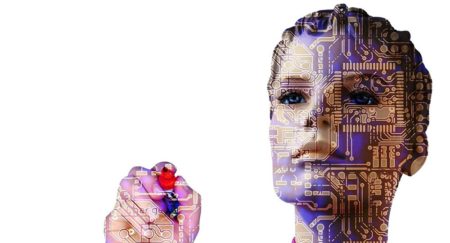May 21, 2019 – In the Robin Williams’ film, Bicentennial Man, he plays a humanoid robot that trades his artificial capability to be immortal, to become human and subsequently experience death. The robot, named Andrew, over two centuries and through numerous technological upgrades becomes more human-like and eventually achieves mortality, succumbing to old age.
Today, when a robot dies, we recycle its parts including anything deemed hazardous, or in some cases just throw it into landfill. But scientists at the Istituto Italiano di Tecnologia in Genoa have another idea, to make robots out of materials that will allow robots to die and decompose just like humans.
The key to this transition is the development of smart materials that biodegrade down to the nano level. To do this the materials invented are being built from the atomic level to create composites that exhibit the requirements necessary for the internal electromechanical and digital processes as well as for the provision of robotic skin that is tactile, in other words containing sensors, and flexible like that of humans.
Athanassia Athanassiou is a Senior Researcher of the Smart Materials Group at the Institute. her work is focused on developing polymer and nanocomposites for biomedical devices, flexible electronics, and more. She is looking at biodegradable materials to replace current food packaging and recently developed a band-aid that is biodegradable. So if you can make a band-aid biodegradable it shouldn’t be too much of a stretch to make robotic skin do the same thing but only once the device has reached end of life.
States Athanassiou, “We are infusing any material with nanotechnology. So what we are doing apart from making these new composite materials – smart materials – we’re also using them to change the properties of other materials, other existing materials like paper or cotton or different foams; from synthetic foams like polyurethane or forms of cotton. So like this, in all these existing materials we are giving new properties that these materials don’t have so we can open up their application range.”
The smart materials have the ability to be both flexible and hard to make them useful not just for a robots outer covering, but also for its internal parts. By replacing metal and plastic with smart materials robots can become more human with internal structures that are more of a match for the properties found in the human body. Athanassiou believes at some point an entire robot’s body will be designed to decompose just like flesh and blood.
In the fictional Bicentennial Man, we saw an all-metal Pinnochio-like robot evolve through a series of engineering upgrades to become a real living flesh and blood creation. Athanassiou’s vision to achieve the same won’t require the upgrades. We will be building robots out of smart materials that will bypass all that unnecessary evolutionary upgrade. And as artificial intelligence (AI) matures to create self-awareness in our machines, we may see emerge sentient robots that look and feel like us, and upon death experience “from dust to dust” just like we humans.
















